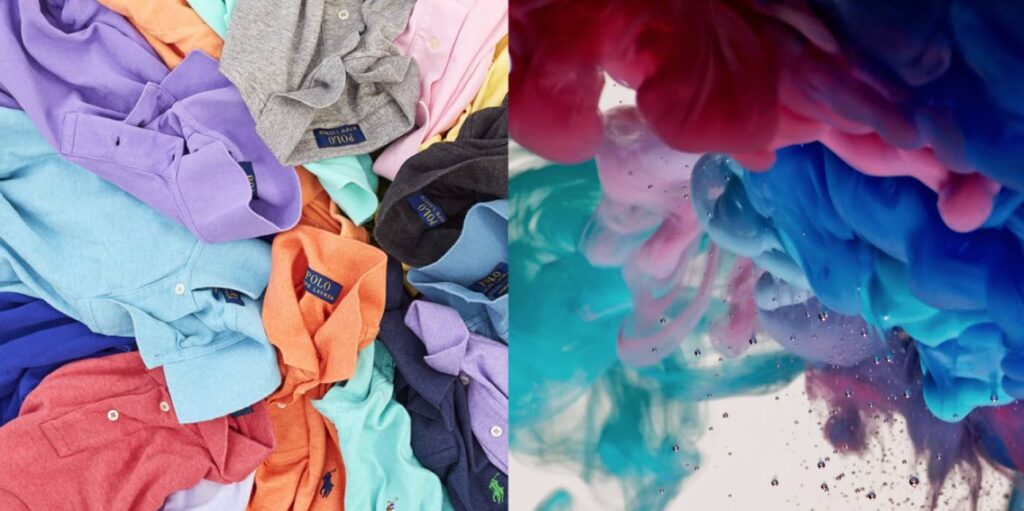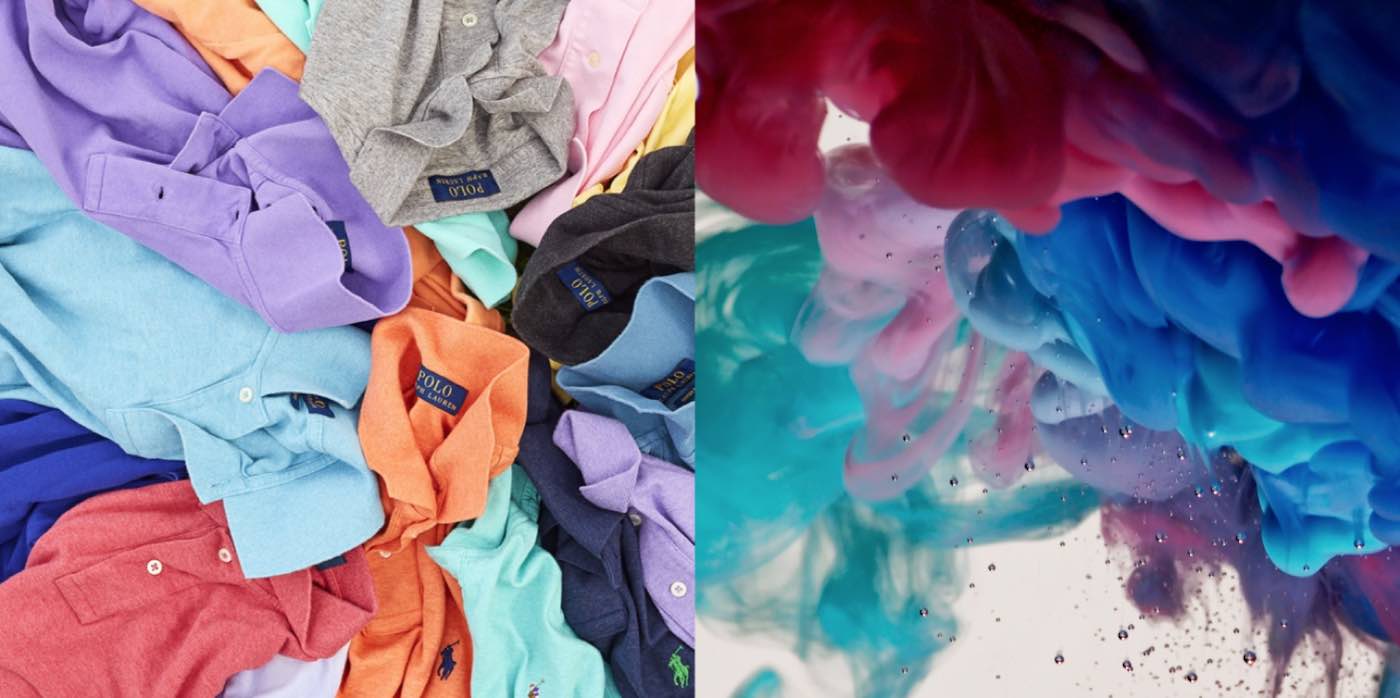Every year, trillions of liters of water are used for fabric dyeing alone, generating around 20% of the world’s wastewater. Untreated, it is incredibly polluting, so requires rigorous, lengthy, and costly treatment to make the water reusable.

Recently Ralph Lauren brought together four leading innovators, including Dow, to develop a way to significantly reduce the amount of water, chemicals, and energy needed to color cotton, by enabling up to 90% fewer processing chemicals, 50% less water, 50% less dye and 40% less energy without sacrificing color or quality.
The Color on Demand system uses a set of technologies that will enable the recycling and reuse of all the water from the dyeing process, to establish the “world’s first scalable zero wastewater” cotton dyeing system.
In addition to significant water savings, Color on Demand dramatically reduces the amount of chemicals, dyes, time, and energy used in the cotton dyeing process. Most importantly, the system utilizes the current dyeing equipment already in factories.
“If we want to protect our planet for the next generation, we have to create scalable solutions that have never been considered before. This requires deep and sometimes unexpected collaboration and a willingness to break down the barriers of exclusivity,” said Halide Alagöz, Chief Product & Sustainability Officer at Ralph Lauren.
RELATED: Company Mimics Spiders to Create Lustrous Faux Silk That is 1,000x More Energy Efficient
According to a company statement, “To implement its groundbreaking approach, Ralph Lauren brought together four innovators in their respective fields, including Dow, a leader in materials science; Jeanologia, a leader in sustainable solutions for garment and fabric finishing, with high expertise in garment dyeing and close loop water treatment systems; Huntsman Textile Effects, a global chemicals company specializing in textile dyes and chemicals; and Corob, a global technology leader in dispensing and mixing solutions, to reimagine each stage of the coloring process and join this shared mission to create a more sustainable and efficient system for cotton dyeing.”
As part of the first phase of Color on Demand, Ralph Lauren has optimized the use of ECOFAST Pure Sustainable Textile Treatment, which is a pre-treatment solution.
And, they worked with World Wildlife Fund to accelerate change of the fashion industry’s outdated practices, and at a scale that matters.
An Open Source manual for change
This month, the companies have jointly released a detailed open-source manual to create an even more meaningful positive environmental impact.
RELATED: H&M In-Store Recycling Machine Turns Old Clothes into New Threads—A World First
The co-developed, step-by-step manual details how to use ECOFAST Pure, a cationic cotton treatment developed by Dow, that utilizes already existing dyeing equipment.
“We are proud to share it openly with our industry, with the hope that it will help transform how we preserve and use water in our global supply chains,” said Alagöz.
Ralph Lauren began integrating Color on Demand into its supply chain earlier this year and first launched products utilizing ECOFAST Pure as part of the Company’s Team USA collection for the 2020 Olympic & Paralympic Games in Tokyo.
“As fashion supply chains look to recover from impacts of the pandemic, there is a critical window to build more sustainable practices into production processes,” said Mary Draves, Chief Sustainability Officer at Dow. “By collaborating today to scale a less resource intensive dyeing process, we can help address pressing challenges, like climate change and water resiliency, in the long-term.”
You can download the manual and learn more about ECOFAST Pure, here.
Within three years, the Ralph Lauren brand aims to use the Color on Demand platform to dye more than 80% of its solid cotton products.
SHARE the Sustainable News With Fashionista Polo-lovers on Social Media…




















